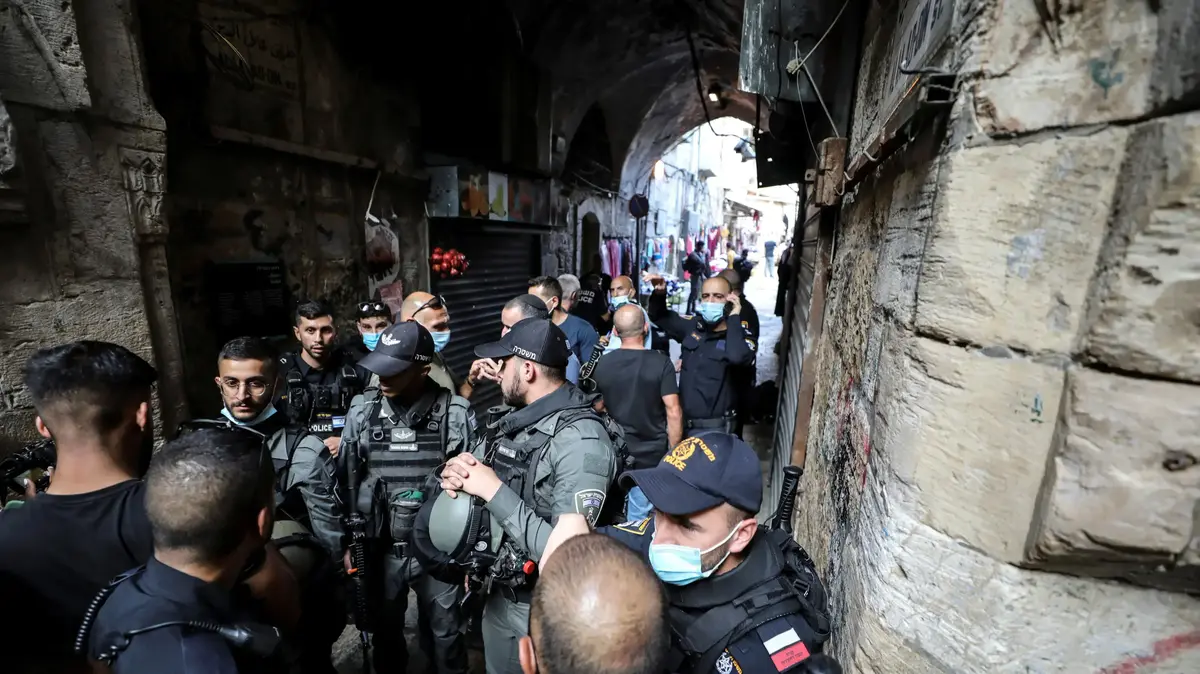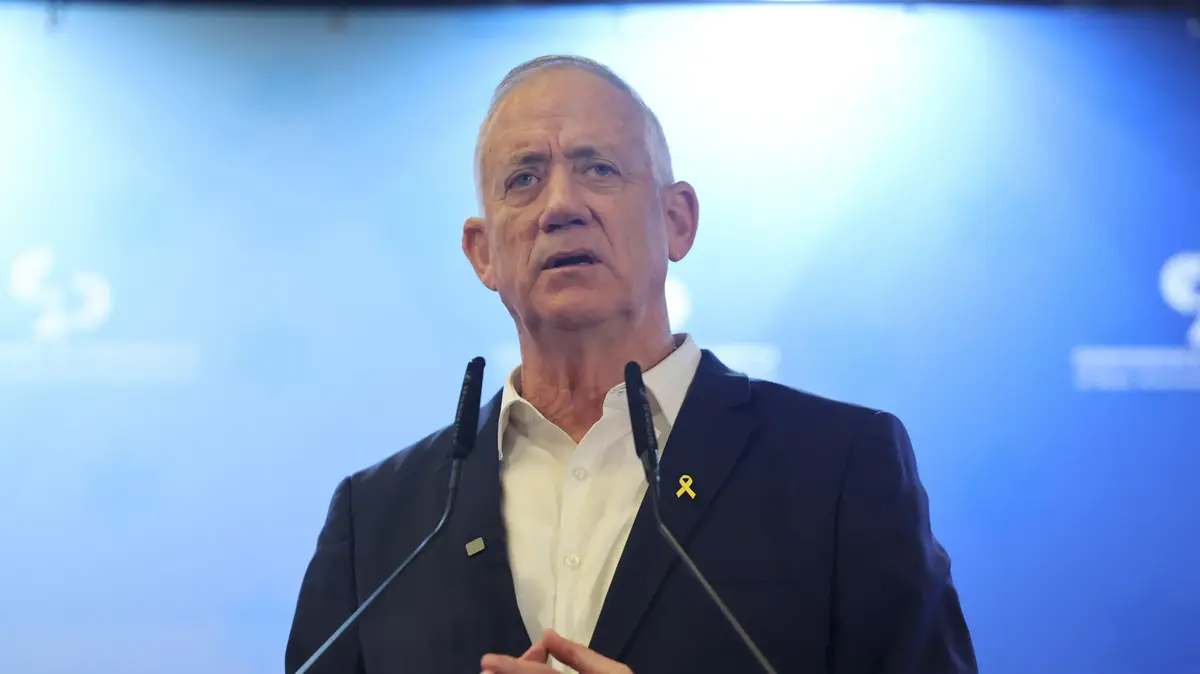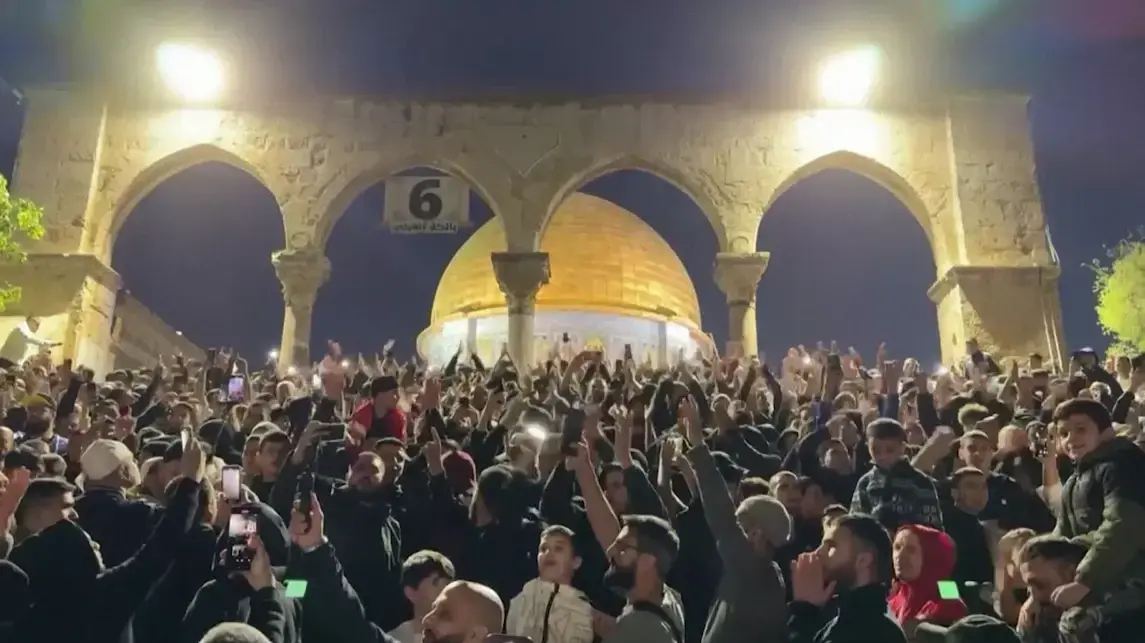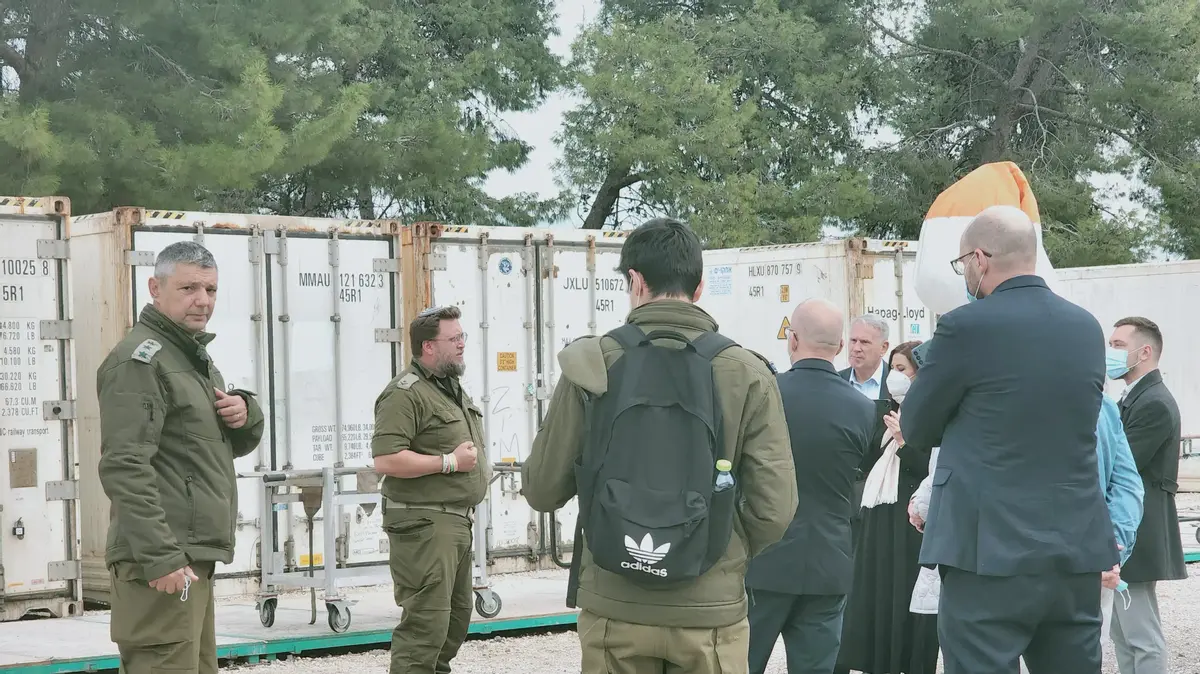It happened on the eve of the second Shavuot after the Six Day War. A group of Lehi veterans rented from the Absentee Property Authority a large, empty building in the heart of the Arab neighborhood of Beit Hanina and moved into it. The house, which was later called "Beit HaSheva" (and where Jews still live today), is located not far from the site of the small Jewish settlement "Kfar Hebrew" (Neveh Ya'akov of today), who fell in the battles of 578, on the eve of the establishment of the state.
One of the first visitors who came to that unusual "settlement" was none other than the prime minister at the time, Levi Eshkol, the prime minister of the government of victory in the Six Day War.
Eshkol had a sentiment for settlement in northern Jerusalem.
In his memory were still burned his days as a young man alongside Berel Katznelson, Ya'akov Fat and others in the first labor group that ascended in 1912 to Atret, the neighborhood of a Hebrew village.
These two points had a common fate.
Both of them fell almost together in 1978, after heroic battles and many sacrifices. A "convoy of crowns" came to both of them in an attempt to save them, but the Arabs ambushed it and killed 14 of its men. The evacuation of both was also done by order, since their defenders refused to abandon them, despite their desperate situation.
The Lahi people in Beit Sheshiva welcomed Eshkol with hugs, took him into one of the apartments in the building, locked the door and informed him: You are not leaving here until you promise us to confiscate all the territories of a Hebrew village that were seized by the Arabs. The Lahi veterans did not need take a lot of trouble
Eshkol responded quickly.
A year later, thousands of dunams were expropriated.
In 1970, the Eshkol government began building the new Neve Ya'akov neighborhood, northeast of the point where a Hebrew village was located, as part of the chain of "ring neighborhoods" established in the territories of liberated Jerusalem after the Six Day War.
Today, about 28,000 residents live in Neve Ya'akov.
Three weeks ago, on Saturday night, seven people were murdered in its center.
The next day, ministers demanded from Netanyahu to quickly promote the construction of a Jewish neighborhood in Atret as well, but they encountered a cold response, very far from the sentiment in the spirit of Eshkol.
The discussion on an appropriate Zionist response in the spirit of "in your blood" and "planting on every displacement" focused on the Yosh sector. It resulted in the series of nine old outposts and the promotion of 9,409 new units in existing settlements.
The decisive statement regarding Yosh only highlighted the lack of an "appropriate Zionist response" in Jerusalem itself, the epicenter of the attacks and bereavement in recent weeks.
Although a successful industrial zone has been operating in the Atarot region for many years, the residential neighborhood that the Ministry of Housing planned there has been frozen for political reasons for three decades.
The Jewish neighborhood in Atret is supposed to be built in the area where, until the beginning of the 2000s, during the Second Intifada, Jerusalem's airport operated, on Jewish-owned land.
9,000 units are planned for the location. The lobby that is trying to promote Atarot sees it as a twin sister to Neve Ya'akov. He suggests naming it after Rabbi Ovadia Yosef, both because it is likely that a large ultra-Orthodox population will inhabit it, and also in the hope of spurring the Shas people into action.
During the days of Aryeh Deri in the Ministry of the Interior, the Atarot program was stuck and was not promoted at all.
A strategic neighborhood
It was only during Ayelet Shaked's tenure as Minister of the Interior that the Atarot plan came a long way and finally reached the discussion in the District Committee for Planning and Construction of the Jerusalem area.
The committee requested an environmental impact report.
In those days, the Minister for Meretz Tamar Zandberg sat in the Ministry of the Environment, and the report was prepared by text.
Zeev Elkin, the Minister of Housing, managed to rescue the stuck review cart, and now the document is almost ready.
It makes it possible to build a neighborhood in Atret.
But Netanyahu, as he has done for many years, does not authorize the district committee to discuss submitting the plan to the public's objections, in order to advance another significant step in the path of the Hatchim that is still right for her.
The Shas people in the Ministry of the Interior, which is in charge of the field of planning and its committees (the spirit of Aryeh Deri still hovers in the ministry), are in no hurry to help. In the Shas, unbelievable, there are those who link the promotion of crowns with the promotion of the Deri law and even imply that "Deri first" , and that first of all - it must be returned to the office.
This reference to the Atarot story is somewhat reminiscent of a similar cynical pattern of conduct by Netanyahu (about two years ago), who then linked the promotion of Atarot with the joint running in the elections of "Religious Zionism", "Otzma Yehudit" and "The Jewish Home", which he very much desired.
The Atarot program, however, is not "another program."
This strategic neighborhood is of critical importance to the capital of Israel.
The question of its establishment will decide whether the "northern finger" of Jerusalem, which was included in the borders of Jerusalem after arguments in 1967, will remain part of the fabric of the Israeli-Jewish settlement or whether the Palestinians will take control of it, and even cut it off sovereignly from Jerusalem, as they aspire in the declaration, in favor of their dream of a Palestinian state.
The story of Atarot is an embarrassing story from a Zionist point of view that has a hard time bearing losses, and even harder to admit it.
For the first time, Atarot fell in 1768, its defenders who stood in the siege watched from the nearby Neve Ya'akov neighborhood as the Arabs looted their settlement and set it on fire.
For the second time the Palestinians won the crowns during the second intifada, when terrorist gangs fired on the runways of the airport there and disabled the flights there.
Israel closed the airport, and it has not reopened to this day.
The third Palestinian victory is a lasting victory - freezing the establishment of the Jewish neighborhood in Atret - but it is not final.
In an almost miraculous way it is still reversible: the Jewish lands there were not seized by the Palestinians for illegal construction, as happened in many other areas around Jerusalem.
The state crowns were determined enough to prevent such a construction.
The Palestinians are sure that the place will eventually fall into their hands.
In 2000 and 2008, they rejected generous offers from the Barak and Olmert governments to manage the place jointly with Israel.
The PA newspaper, "Al Hayat Al Jadida", even wrote in those years that "the Qalandiya-Jerusalem airport is a prisoner waiting for the Palestinian return".
In the meantime, the sixth Netanyahu government stutters on the issue of crowns, as on many other issues concerning the promotion of the Jewish settlement hold in East Jerusalem.
Already during the negotiations on the formation of the government, it became clear that Netanyahu refuses to commit to the coalition agreements for the construction of Atarot, E1 (the neighborhood connecting Jerusalem to Melee Adumim), the Har Huma C neighborhood or the Kedmat Zion neighborhood near Abu Dis. Netanyahu also refused to commit to declaring the area of Morot Mount Scopus as a national park.
Netanyahu "at his best"
In contrast to the situation in Yosh, where the Likud and Netanyahu were ready to commit, Jerusalem, the capital of Israel, turned out to be present-absent from these agreements. All that was included on the issue of Jerusalem were general and non-binding sentences along the lines of "The government will focus on the establishment and development of Jerusalem, the capital of Israel, in large-scale construction , in infrastructure, employment and budgets, and will work to maintain full sovereignty and strengthen governance in Jerusalem...".
The terminal in Atret when the airport was still active, photo: Ami Frank
Moreover - remember the Biden procedure?
This procedure was a code name for the procedure that obliged the planning committees in Jerusalem during the Obama era to coordinate any construction or planning approval in the area of Jerusalem beyond the Green Line with Prime Minister Netanyahu's office. It was formulated in early December 2012, following the visit to Israel by Joe Biden, then Obama's deputy During the visit, the district committee announced its decision to advance the planning of 1,600 units in the Ramat Shlomo neighborhood in Jerusalem, and Biden "exploded" at Netanyahu.
The Biden procedure has since become routine.
Even during Trump's time in the White House, the procedure continued, when all approval and promotion of construction in the areas of the eastern part of the city went through the Cabinet Secretariat through one of Netanyahu's advisors, a member of the Cabinet Secretariat, attorney Ronan Peretz, later Deputy Director General of the Ministry.
The Biden procedure was a procedure that no other local or district planning commission in the country was required to follow, and now the "Biden procedure" will perhaps be called the "Dermer procedure."
My colleague, the journalist Hagai Huberman, revealed a week ago in the weekly "The Mood" that Prime Minister Netanyahu tasked his confidant and close associate, Minister of Strategic Affairs Ron Dermer, to deal with the whole issue of building the new neighborhoods in Jerusalem, especially the Atarot neighborhood in the north of the city. Netanyahu ordered Dermer to deal with the issue while Full coordination with the Biden administration. Dermer is known to have good connections and moves with the American administrations. He served as Israel's ambassador to the US for seven years.
The practical meaning of the new procedure is that the chance that the construction in the crowns will go ahead is even smaller.
The US Secretary of State, Antony Blinken, made it clear during his last visit to the country that the US opposes the construction of a Jewish neighborhood in Atret.
The person who blasted Netanyahu and his government this week on the crown issue is Jerusalem Deputy Mayor Aryeh King, who told "Israel this week": "This is Netanyahu 'at his best.' He was always against Jewish construction in East Jerusalem, and when he had already built, for example, the Wall 'When forced' to do so, and only when his rule is threatened."
Is there a chance that Atrot will be built?
"Only if his coalition partners - Ben Gabir, Smotrich and Mouz - threaten him that if he does not approve Atarot and E1, and immediately sets a date for the discussion of the deposit of the Atarot plan, they will not support the legal reform he so desires. This is how 17 MKs behaved with Netanyahu , led by former MK Michael Kleiner, in 1997, who were absent from important votes in the Knesset and threatened the continuation of his rule. This is the only language he understood. It is the only language he understands even today. It is sad that this is the only way to promote meaningful settlement in Jerusalem, but it is a fact."
The Minister for Settlement and National Missions Orit Struck, who I also asked this week why the government does not promote the establishment of Ator and additional construction in East Jerusalem, states that "besides the need and obligation to strengthen and build a united Jerusalem at all times, this obligation becomes more significant in the face of the days of terrorism in Jerusalem. The repeated attacks In Jerusalem," Struck says, "a settlement-government response is also required; one that makes it clear to the terrorists that the attacks are not profitable, because they strengthen Israel's grip on Jerusalem, and not the other way around. We will insist that such a response be given," she promises.
Muslim tourism in Atret
Is the moratorium on crowns related to the fact that even former President Trump included it in his plan of the century?
Is this moratorium related to the fact that even Trump's people designated there (in their crowns) for the Palestinians their own tourist area, which they will open for the benefit of Muslim tourism to Jerusalem and the holy sites?
In Netanyahu's previous term, MK Amit Halevi (Likud) was engaged in locating a plot of land near Atret where the Palestinians could establish such a tourist area in a way that would not harm the establishment of the Jewish neighborhood there.
Even then, a knowledgeable source reveals, "this solution did not impress the Americans."
In the drawers of the US State Department, Atarot has been cataloged for years as a point that will pass under the permanent settlement to the possession of the Palestinians, or become an area under joint management with Israel. A Jewish neighborhood instead, the Biden administration believes, could torpedo this.
Amit Halevi, who as mentioned dealt with the Atarot matter, points out that the planned neighborhood "is part of a strategic axis and its future is to create a continuum in northern Jerusalem between Givat Ze'ev and Pisgat Ze'ev, and to cut off the terror route that goes from Ramallah to Jerusalem. I previously advanced the neighborhood plan so that it would fit the American outline. The killing sprees in northern Jerusalem in two weeks The latter are a chilling reminder of the vital need to approve the neighborhood and create this northern iron wall."
A political official in Jerusalem explains the freezing of the two strategic neighborhoods of Atarot and E1 and says that the state currently has a different national priority order.
"It is now more important to get the support of the Americans in the activity against Iran, and also to get their backing for our activity in Syria, in the days when coordination with the Russians is more difficult than in the past. Netanyahu would like to build the Atarot neighborhood, but he knows that as prime minister he must set priorities. The nuclear issues And relations with the US and Russia are more critical to Israel's national security than Atarot and E1.
This is the prime minister's first commitment at this stage and he is fulfilling it."
In the meantime, in the absence of a government settlement in East Jerusalem, whether from the beginning, or as a response to the recent attacks, King, together with the ministries of housing, heritage and others, is promoting the "small plan" - a plan to realize ownership of an area of about 30 dunams in northern Jerusalem, between Neve Ya'akov and Beit Hanina
The lands in question are part of the lands expropriated by the Eshkol government to rebuild Neve Ya'akov, but this end was not realized.
These lands stretch between today's Neve Ya'akov neighborhood and Beit Hanina, only tens of meters from the spot where Hayeri Alkam, the murderer of the Shevah in Neve Ya'akov, was killed on Shabbat night two weeks ago.
During Nir Barkat's time as mayor, it was planned to establish a school there for the children of Beit Hanina.
When Moshe Leon took Barkat's place in the municipality, this plan was frozen.
In its place, an alternative plan is now being promoted in cooperation between the Jerusalem Municipality, the Ministry of Housing, the Ministry of Heritage Affairs and the "Life in Jerusalem" association that will strengthen the Jewish hold in the place.
Kiryat HaSheva
The association that deals with this is headed by two people, Rabbi Baruch Thana of the Old City and Israel of Jaffa, currently a resident of "Beit Hashiva" in Beit Hanina.
King says that the plan is to establish a settlement yeshiva and an educational kriya in the eastern part of the area, and in the western part a police station, a fire station and an MDA point. In the center, on both parts, a "Hebrew Village Heritage Center" is to be spread over. The whole kriya was planned to be called "Kiryat HaSheva "And in a way that no one planned, the name now also corresponds with the number of victims in the severe attack in Neve Ya'akov. King updates on a "good meeting" that took place last week between him and the Minister of Heritage Affairs Amichai Eliyahu and the Ministry of Housing. "As soon as there is a plan, we here at the municipality will promote it." , he promises, but is unable to guarantee that political delays will not arise here as well.
Another plan, which seeks to create an additional hold on the crowns, talks about establishing a museum and visitor center for aviation heritage in general and crowns in particular, from the days of the British Mandate to the present day, in the old terminal building of the abandoned airport.
Behind this plan stand the association "Binin Kesht Li-Jerusalem", the Ministry of Heritage and the Jerusalem Municipality, and it is in the stages of preparing a program.
were we wrong
We will fix it!
If you found an error in the article, we would appreciate it if you shared it with us















